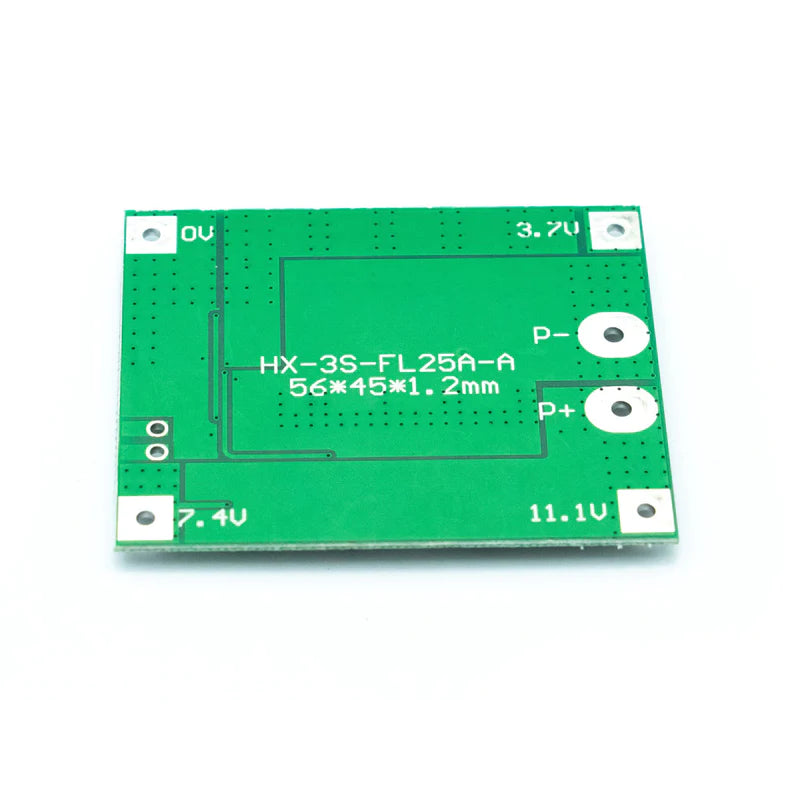



A battery management system (BMS) provides protection during the charging and discharging process, Increases the lifetime of the battery. This 3S 25A Lithium Ion BMS is a high-quality BMS for Lithium-Ion Battery. The module interfaces with 3 Lithium-Ion cells of 3.7V associated in an arrangement so that they make up an 11.1V Battery Pack. The BMS provides Over-discharge protection, over-current protection, and load short circuit protection. This BMS has a Balance Charge feature. The maximum continuous charge/discharge rate is 25A.
The 3S 25A Lithium Ion BMS also features connections for the Temperature probe. The module will compensate the charging or discharging current for the temperature.
Connections
| Charging Voltage | 12.6V DC CC/CV |
| Balance Voltage for Single Cell | 4.2V |
| Max Continuous Charge/Discharge Current | 25A |
| Overcharge Detection Voltage | 4.25V |
| Overcharge Release Voltage | 4.15V |
| Over-Discharge Detection Voltage | 2.3V |
| Over-Discharge Release Voltage | 3.0V |
| Over-Current Detection Current | 35A |
| Dimensions | 32x40x16mm |
| External Short Circuit Detection | Yes |
| Automatic Recovery on the release of a fault condition | Yes |